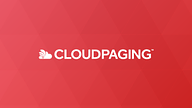Send Ghost to the grave: problems and alternatives to imaging using Ghost

If you’re in the IT department at a college or university you’ve been here before: Summers from Hell. The annual process to refresh lab spaces with a new, updated computer image that takes months to build and deploy.
As budgets continue to contract and strategic project lists grow, how many more summers will your team be able to commit to this arduous and sometimes wasteful task?
What is Ghost?
Ghost, or more formally Symantec Ghost Solution Suite (GSS), is a long-lived software tool designed to assist in the mirroring of whole computer hard drives or individual hard drive partitions. The original product DNA dates back to the mid 1990s and has long been a trusted tool for IT departments around the world.
Key features of Ghost
Ghost is marketed as a backup program. Its recovery environment comes in an ISO image file that needs to be written to a CD or other physical media, if it is to be used on a physical machine. This provides an environment to perform offline system recovery or backup. Ghost can mount a backup volume to recover individual files.
What does Ghost do?
With Ghost, IT can enable a rich, all-purpose backup application that's flexible enough to copy whole drives, individual files, or sets of files. As a drive-backup application, Ghost 15.0 creates "images" of whole drives in the same general way that drive images are created by Windows Backup, or by rival packages such as or Acronis Backup & Recovery.
For IT departments in Higher Ed institutions, Ghost Solution Suite (GSS) often made the arduous task of rebuilding a computer lab on campus just a bit easier. A PC technician could build out a source computer with all of the software, settings, and configurations desired by the college or university and then replicate that master computer image to an entire lab or labs across campus. This ensured a consistent user experience for the students and faculty as they moved between computers or rooms.
Ghost is primarily used by IT because it's a relatively inexpensive way of cloning an OS and the applications, to distribute that image to other machines. It’s been used by Universities for years, as the license cost was inexpensive and a lot of IT technicians were used to it.
What are the problems with using Ghost?
As a cloning tool, Ghost is one of the best. However in Higher Education, cloning each machine and distributing that image around the network is inefficient and slow, especially when it's done to deliver applications to any device. With an ever-increasing image size regardless of the tool that’s being used, distributing software via an image is seen as outdated.
A lot of institutions have moved to Microsoft System Centre Configuration Manager (SCCM); a systems management software product developed by Microsoft for managing large groups of computers running various operating systems (OS). Configuration Manager provides remote control, patch management, software distribution, OS deployment, network access protection and hardware and software inventory. That's great, but it still uses the basic principle that Applications sit within an image tied to the OS and Services, and that brings about an entirely new range of challenges when it comes to delivering any app to any device.
Alternatives to Ghost for imaging
Two other competing products also exist to accomplish the same type of imaging, or cloning, operation:
- Microsoft SCCM
- Dell (now Quest) Kace
Both of these products are somewhat more fully featured as they also let administrators deploy software packages as well as full disk images. However, with more features and flexibility comes more complexity. Customers that I’ve spoken with indicate that both SCCM and Kace require quite a bit of man hours to keep the systems running smoothly and imaging successfully.
Can automation solve the problem?
Deployment management systems such as SCCM or KACE can help with the lab refresh task, but they’re not without their own challenges. Often a system like this requires the attention of a dedicated system admin, thereby pulling an FTE from other projects. However, for plain vanilla images where just the OS is being deployed (and maybe a few other small apps) a deployment management system might be the way to go.
Through centralized management and reporting, an admin may be able to re-image 80-90% of their fleet. Automated and sometimes intelligent driver injection, failed task retries, and error reporting can help bring the imaging process to a close in short order. Unfortunately, deploying just the OS is only the first step in the traditional campus image.
Frequently hundreds more apps need to follow, or be included in the original image, which then grows in size and can put a strain on network services. If your team is not using automation, then you’ll likely require a large contingent of staff to deploy via sneaker net.
Alternatives to imaging technologies for delivering apps
With cutting-edge software virtualization technologies becoming more mainstream (it’s not just App-V and ThinApp anymore!), colleges and universities can move from the old ‘Just-in-Case’ model of software delivery to a more modern ‘Just-in-Time’ approach to application deployment.
The Just-in-Case model of building images with every conceivable software title is simply no longer needed. This strategy is also wasting valuable resources and having a negative impact on the student experience. Moving to a Just-in-Time approach frees up your expensive admins, makes the student experience awesome, and puts an end to summers from hell.
And for IT directors and CIOs, it helps the department realize and achieve some of the greater strategic projects, like BYOD for example.
Any app, any device, anywhere, anytime
AppsAnywhere delivers Just-in-Time software deployment by leveraging leading technologies such as Cloudpaging, and the extremely popular app store. By combining AppsAnywhere with automation platforms like SCCM, your team can refresh the entire campus fleet in just days. This leaves the rest of the summer for strategic projects such as cloud computing, improving the student experience, enabling BYOD, or event the fulfillment of well-deserved time off with family and friends!
Try it now
The list of features and benefits goes on, but it’s best to see it in action! Head over to the AppsAnywhere trial at try.appsanywhere.com today.
Related reading...

Alternatives to Symantec's end-of-life Workspace Virtualization and Streaming product
Symantec's popular Workspace Virtualization and Streaming (SWV/SWS) tools are end-of-life and no longer supported. What are the alternatives for virtualizing applications and software?

7 Benefits of Delivering Apps Using Application Virtualization
Whether you’re new to virtualizing apps or looking to use it alongside existing technologies, we've outlined the top 7 benefits of application virtualization.

Durham University
Learn how Durham University have enabled student access to software on any device across campus (including macOS and Chromebooks) thanks to AppsAnywhere, Cloudpaging and Parallels RAS
Discover AppsAnywhere...

Improve student outcomes by delivering a better IT service, on and off campus. Make any app available on any device, enable BYOD and repurpose your dedicated lab spaces, all without the need for complex VDI environments.
Related reading...

Reduce Your Image Size
With Cloudpaging and application virtualization you separate the apps from the OS, so you can massively reduce the size of your image.

Virtualize 100% of Windows apps
With AppsAnywhere's application virtualization technology you can virtualize all your Windows applications, and deliver them to students on-demand. 100%!

Reduce or right-size VDI
Right-size or enhance your existing Higher Ed desktop virtualization or VDI solution by delivering software apps to any student with AppsAnywhere.